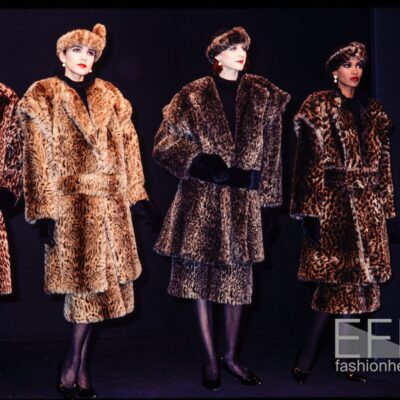
Runway Archive 04.01.2022
12.10.2018
1990sfashion photography
A photographic project that became the manifesto of the designer’s new aesthetic
The particularity of Raf Simons as a designer is his deep interest in the person, even before the dress. The cult of the dress, professed by the creators who see fashion tied to the double thread with art and declare its intrinsic artistic value, acquires a different value, more linked to the relationship with the body, when considering fashion as a branch of industrial design: curator Richard Martin had been the theorist of this line of interpretation. Simons pours his scholarly knowledge from industrial designer into his fashion, using a modus operandi that characterizes both the creation – which would be more correct to call, to all effects, ‘design’ – and the collaborations that develop into universes adjacent to fashion.
In this context fits Isolated Heroes: a photographic project born from the collaboration between Raf Simons and David Simms, about which it is reductive to talk about ‘fashion’ photography. The project consists of photographic portraits of the models that have collaborated with Simons, dressed in the clothes of his spring/summer 2000 collection. The boys portrayed are all models ‘by chance’, chosen by forgetting the almost omnipresent criterion of seriality – ironically evoked by the serial number assigned to each one, which appears next to the proper name. The face, the gaze, the eyes are the expressive and interpretative fulcrum of a feeling that unites all aspects of life. Fashion is almost a tool, an object of design, not deified but complement to the affirmation of an evolving personality.
By shifting the attention span from the dress to the face, which becomes the identifier of a whole generation and a well-defined social layer, the meaning of all the display does not lie in the mere performance of the garments of a new collection, but seeks to explain the motivations through a deeper and more conscious excavation, reaching the roots of the concept.
Simons, with the collaboration of Sims, manages to communicate through an apparently simple work of saturation and balancing of lights and colours, the taste of the collection. He does this, showing the public the starting point, the fundamental and primitive inspiration and, finally, also the ideal reference market. And this is certainly not something to be overlooked when considering an artistic work that deals with individual and particular personalities. Without trying to modify them artificially, but rather using this natural ‘modern beauty’ to challenge the stereotypes that fashion offers in the race to uber-selected and univocal perfection. In this sense, the project is presented as a statement of artistic direction that goes beyond the traditional autocratic and one-way vision that fashion had always sought, in the construction of an identity based on luxury and elitism.
The models are Modern David who seem to look further, towards objectives that are indefinite and unknown, empathizing only with themselves and with their own thoughts. New Kleobis and Biton, fixed in the eternal blessing of a youth where the rules have yet to be fixed, for which the battle is nothing but ‘adult’ life.
In considering all these aspects, Simons and Sims gave life to a work of ‘total art’, for the deeply modern communicative and conceptual one. Perhaps it is in this sense that we can speak, after a more in-depth analysis and, finally, rightly, of ‘fashion photography’. Fashion then stops being a neurasthenic movement through recurring trends, an index of fluctuations decided by few but accepted as a diktat by the mass. Instead, it becomes an integral part of character growth and formation, a conscious choice that moves in the direction of singularity, but also in the non-avoidable creation of groups of men with compatible sensitivity.